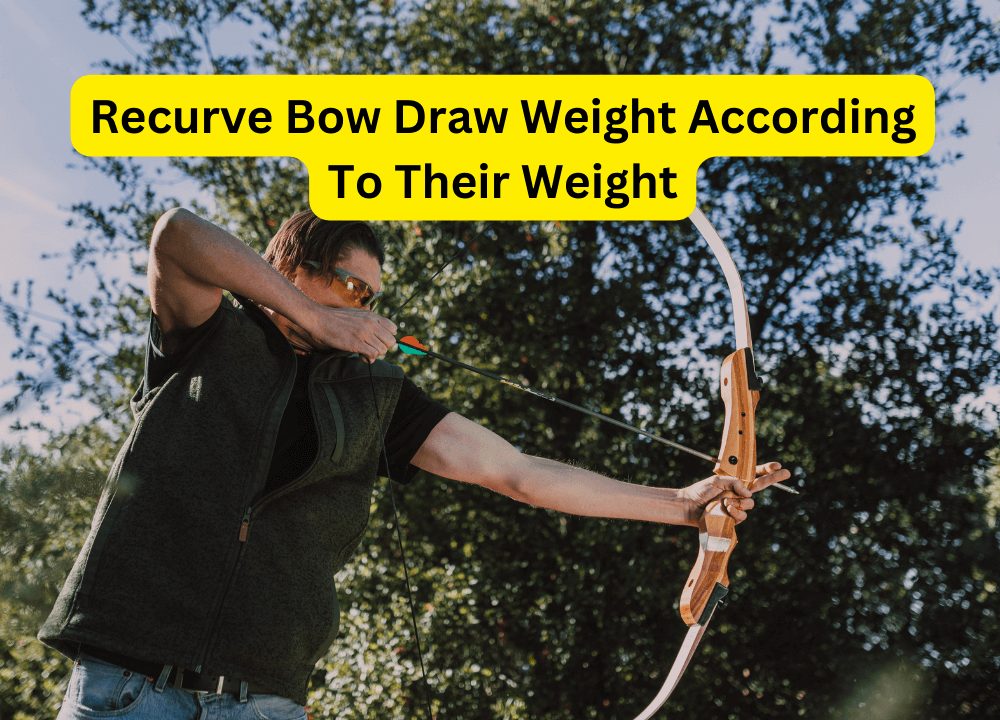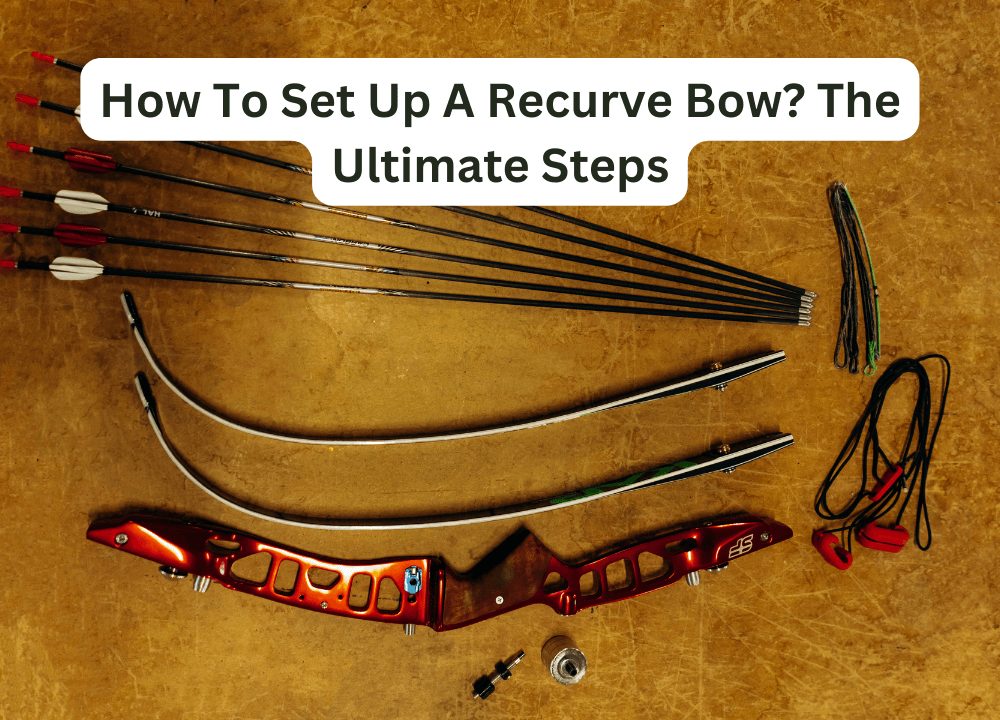
If you’re in the market for a recurve bow, you’ll quickly realize that there are lots of factors to consider. From the length and type of bow limbs to drawing weight and brace height, it can be overwhelming particularly if you don’t have any experience with archery. One of those important elements is drawn weight; this ultimately helps determine how powerful your shots will be.
Choosing the right recurve bow draw weight for your needs is crucial so that you can perform at your best level and produce excellent accuracy. To help make choosing the perfect recurve bow much easier, let’s take a closer look at what draw weight means and how to pick a suitable one for yourself.
Understanding Recurve Bow Draw Weight and Its Purpose
The draw weight is the amount of force needed to pull back the bowstring to its maximum point. A good grasp of this concept will help you pick the right recurve bow for your needs and enable you to shoot accurately and effectively. While a higher draw weight might generate greater arrow speed and power, it requires greater effort to pull the string back, which might impact accuracy and cause fatigue. On the other hand, a lower draw weight might decrease shooting velocity, but it is ideal for beginners or archers seeking to refine their shooting skills. Therefore, selecting the optimal recurve bow draw weight will make a big difference in your success as an archer.
Different Types of Recurve Bows and Their Draw Weights
Recurve bows are the most popular type of bow used by archers, hunters, and target shooters. They come in a variety of shapes and sizes, each designed for different purposes. Depending on the individual’s size, strength, and intended use, some recurve bows require more draw weight than others. Here, we’ll discuss the different types of recurve bows and their respective draw weights.
Piece Recurve Bows
One-piece recurve bows are the most basic type of recurve bow, and they are usually made from one solid piece of wood or other material. These bows are often used by beginners, as they are relatively easy to use and maintain. Depending on the size of the bow, one-piece recurve bows typically require drawing weights between 15-50 pounds.
Take Down Recurve Bows
Take-down recurve bows consist of three separate pieces: the riser (the centerpiece), the upper limb, and the lower limb. The advantage of take-down bows is that they can be disassembled for ease of transport and storage. Common materials used to build take-down recurve bows include aluminum, wood, and carbon fiber. The draw weights for these bows range from 25-60 pounds.
Compound Bows
Compound bows feature a pulley system that uses cams and cables to reduce the amount of tension required when drawing the bow. The technology allows for greater accuracy, power, and speed than with traditional recurve bows. Compound bows are designed with adjustable draw weights, making them suitable for both novice and advanced archers. The draw weights of compound bows range from 20-70 pounds.
Longbows
Longbows are classic hunting and warfare weapons that feature a simple design with a single piece of wood or fiberglass curved in an “L” shape. Longbows are often used for traditional archery competitions but are also well-suited for hunting. Their draw weights typically range from 30-60 pounds, making them suitable for more experienced archers.
Take-Down Recurve Bows
Take-down recurve bows are among the most popular bows used by beginner and intermediate-level archers today. These bows feature a detachable riser with limbs that can be removed and interchanged, allowing for more adjustability. Take-down recurve bows have to draw weights that range from 15-40 pounds, making them ideal for those with less strength or experience in archery.
Tips on How to Increase Your Recurve Bow Draw Weight
• Increase draw length: Increasing the draw length will increase the bow’s peak draw weight. Make sure to adjust the limb bolts correctly for a longer draw length.
• Select heavier limbs: Consider replacing lighter recurve limbs with heavier ones, or purchasing a higher-spec bow if within budget. This may require you to replace your current string as it may not fit the new limbs.
• Increase draw weight with stringer: If your bow is strung properly, you can increase the draw weight by using a stringer tool to add tension to the string and limbs.
• Use limb dampeners: Installing limb dampeners can help reduce hand shock, while also increasing the draw weight of your bow.
• Increase arrow spine: Heavier arrows will require more energy to launch, thus increasing your bow’s peak draw weight.
• Adjust your form: Your shooting form can play a role in how much force you apply when drawing back and releasing an arrow. Make sure to practice proper form to get the most out of your draw weight.
• Increase poundage: If all else fails, you may need to invest in heavier limbs or a new bow altogether to increase your draw weight. This is not always necessary and should be done as a last resort. However, having more powerful limbs can help to improve accuracy and overall performance.
• Check your setup: Make sure that you have the right arrow spine, arrow length, and bow draw length to maximize the power of your bow. If these are not correct, they can lead to an inconsistent draw weight.
• Increase poundage gradually: Don’t just jump up to a much heavier draw weight without taking time to get used to it. Increase your weight by small increments and spend time practicing with each draw length before moving on to the next one.
• Stretch: Stretching your bow’s limbs can help them to become more flexible, which will increase the draw weight of your bow. Be sure to do this slowly and incrementally so as not to damage the bow.
• Increase your strength: Strengthening your back, arms, and shoulders will help you draw a heavier-weight bow with more consistency. Focus on exercises such as rows, pull-ups, bench presses, and weighted squats to increase your overall muscle mass.
Considerations When Choosing a Recurve Bow with High Draw Weight
Choosing a recurve bow with a high draw weight can be an exciting and rewarding experience for archers at all levels. Before making your selection, it’s important to consider a few key factors. The first factor to consider is the weight of your draw. It’s vital to find a bow that aligns with your strength and physical capabilities, as a bow with too high of a draw weight can lead to muscle strain and injuries. Next, consider the accuracy and speed of the bow. The higher the weight, the faster the arrow will go, but the accuracy of the shot can be compromised if the bow is too heavy or difficult to handle. Lastly, factor in your budget and any additional equipment you may need, such as arrows and a bow stringer. Proper considerations when selecting a recurve bow with high draw weight can make all the difference for an archer’s overall experience and success.
Final Thoughts
As you can see, selecting the appropriate draw weight of a recurve bow is an important decision that should not be taken lightly. However, with the right guidance and knowledge about factors such as body type, experience level, and shooting style, any archer can make an informed purchase that will serve them for years to come. Remember to always shoot in a safe environment with proper technique and equipment for the best (and safest!) results! Ultimately, the “right” draw weight allows you to hit your targets consistently while still providing you with the enjoyment of shooting your bow. So take some time to do your research, try out different weights at your local pro shop or range, and find what works best for you.




